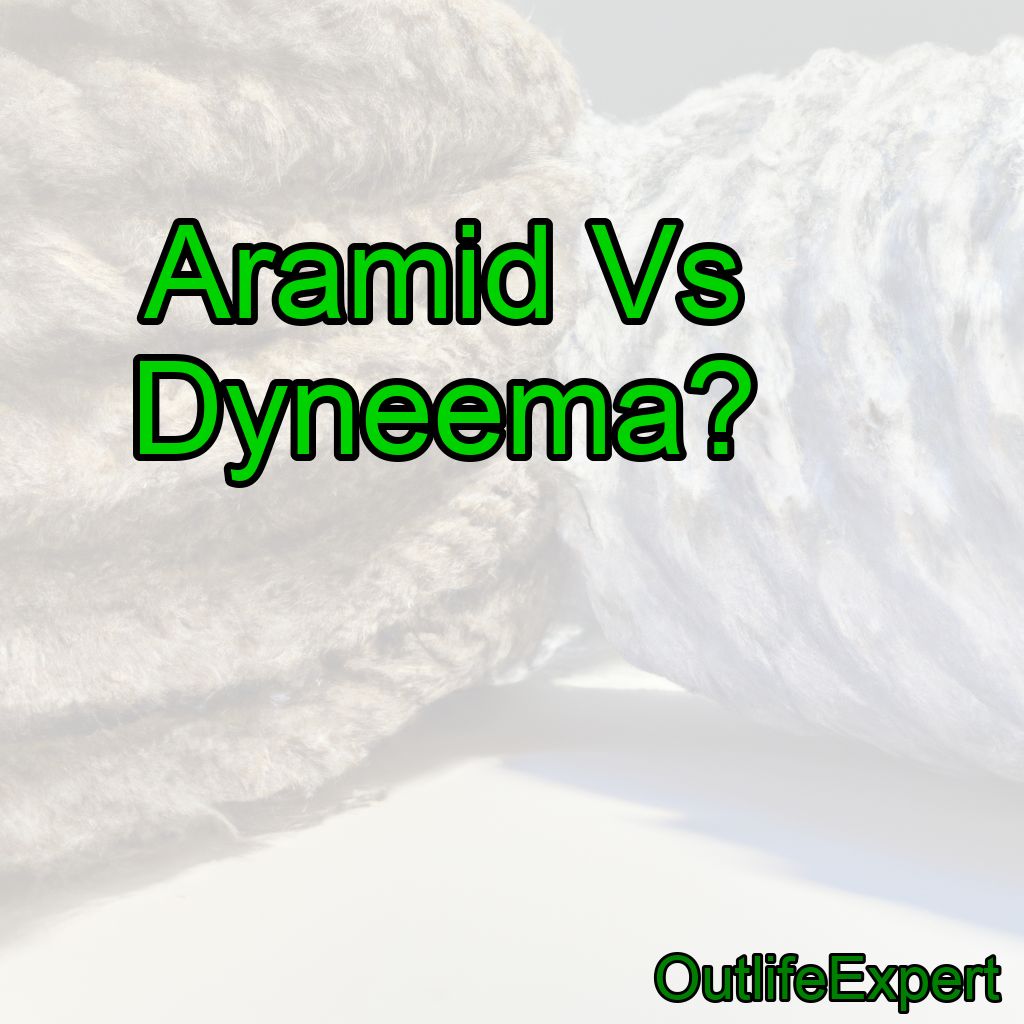Aramid vs Dyneema: What’s the Difference?
Aramid and Dyneema are both synthetic fibers known for their exceptional strength and lightweight properties. However, there are some key differences between the two materials that set them apart. Let’s take a closer look at each of these materials and their characteristics.
What is Aramid?
Aramid is a class of heat-resistant and strong synthetic fibers. The most well-known aramid fibers are Kevlar, Nomex, and Twaron. These fibers are characterized by their high tensile strength, resistance to abrasion, and ability to withstand high temperatures.
Properties of Aramid
1.High tensile strength:Aramid fibers are known for their exceptional strength-to-weight ratio, which means they can withstand a significant amount of force without breaking.
2.Heat resistance:Aramid fibers can withstand temperatures up to 500°C (932°F) without melting or degrading, making them suitable for various high-temperature applications.
3.Chemical resistance:Aramid fibers have excellent resistance to most chemicals, including acids, alkalis, and solvents.
4.Flame resistance:Aramid fibers do not support combustion, making them an excellent choice for flame-resistant applications.
What is Dyneema?
Dyneema is an ultra-high-molecular-weight polyethylene (UHMWPE) fiber that is known for its incredible strength and lightweight properties. It is often referred to as the world’s strongest fiber.
Properties of Dyneema
1.Superior tensile strength:Dyneema has a higher tensile strength than aramid fibers, making it one of the strongest materials available.
2.Lightweight:Dyneema is incredibly lightweight, with a density lower than that of water. This makes it an ideal choice for applications where weight is a critical factor.
3.UV resistance:Dyneema has excellent resistance to ultraviolet (UV) radiation, making it suitable for outdoor applications.
4.Moisture resistance:Dyneema is hydrophobic, meaning it does not absorb water, which makes it an excellent choice for applications in wet environments.
Comparing Aramid and Dyneema in Various Applications
Now that we have a better understanding of the properties of both aramid and Dyneema, let’s explore how these materials perform in various applications.
Protective Clothing
Aramid fibers, such as Kevlar, are commonly used in protective clothing due to their high tensile strength and flame resistance. These materials are often used in body armor, firefighting suits, and cut-resistant gloves.
Dyneema, on the other hand, is used in cut-resistant gloves and lightweight body armor due to its superior strength and lightweight properties. However, it is not suitable for high-temperature applications due to its relatively low melting point.
Ropes and Cables
Aramid fibers are often used in ropes and cables for various applications, such as climbing ropes, parachute cords, and tow ropes. Their high tensile strength and resistance to abrasion make them well-suited for these applications.
Dyneema ropes and cables are also popular due to their incredibly high strength and lightweight properties. These ropes are often used in sailing, rigging, and lifting applications, and they are known for their low stretch and high abrasion resistance.
Composites
Both aramid and Dyneema fibers are used in composite materials to improve their mechanical properties. Aramid fibers are commonly used in aerospace, automotive, and ballistic-resistant applications due to their high strength and heat resistance.
Dyneema fibers are often used in composite materials for lightweight applications, such as sports equipment, helmets, and vehicle armor. Their high strength and low weight make them an ideal choice for these applications.
Which Material is Best for Your Needs?
The choice between aramid and Dyneema largely depends on the specific requirements of your application. Here are some key factors to consider when making your decision:
–Strength:If high tensile strength is a priority, Dyneema may be the better option due to its superior strength-to-weight ratio.
–Heat resistance:For applications requiring heat resistance, aramid fibers are the better choice.
–Weight:If lightweight is a critical factor, Dyneema is the clear winner due to its incredibly low density.
–UV resistance:For outdoor applications, Dyneema’s UV resistance may be beneficial.
In conclusion, both aramid and Dyneema fibers offer exceptional strength and lightweight properties, making them ideal choices for various applications. The decision ultimately depends on the specific requirements of your application, such as heat resistance, strength, and weight.
To recap, here are 10 key facts about aramid and Dyneema fibers:
1. Aramid is a class of heat-resistant and strong synthetic fibers, including Kevlar, Nomex, and Twaron.
2. Dyneema is an ultra-high-molecular-weight polyethylene (UHMWPE) fiber known for its incredible strength and lightweight properties.
3. Aramid fibers have a high tensile strength, heat resistance, chemical resistance, and flame resistance.
4. Dyneema has superior tensile strength, lightweight properties, UV resistance, and moisture resistance.
5. Aramid fibers are commonly used in protective clothing, ropes and cables, and composites.
6. Dyneema is used in protective clothing, ropes and cables, and lightweight composites.
7. Aramid fibers are suitable for high-temperature applications, while Dyneema is not.
8. Dyneema ropes and cables have low stretch and high abrasion resistance.
9. Aramid fibers are commonly used in aerospace, automotive, and ballistic-resistant applications.
10. Dyneema fibers are often used in lightweight applications, such as sports equipment, helmets, and vehicle armor.




